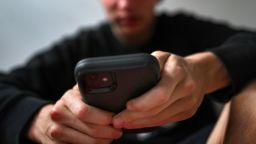Health
Australia Enforces Social Media Ban on YouTube for Under-16s

Australia’s government has decided to include YouTube in its upcoming social media ban aimed at children under the age of 16. This announcement, made on Wednesday, marks a reversal of an earlier commitment to exempt the platform, which is owned by Alphabet Inc. The new legislation, set to take effect in December 2024, will impose the same restrictions on YouTube as it does on other major platforms such as Facebook, Instagram, Snapchat, TikTok, and X.
The ban places the responsibility on social media companies to prevent children under 16 from creating accounts, with potential fines reaching nearly 50 million Australian dollars (approximately $32 million) for non-compliance. A spokesperson for YouTube criticized the decision, stating it “reverses a clear, public commitment” from the government to treat the site as an educational resource. The spokesperson added, “We will consider next steps and will continue to engage with the government,” without addressing reported legal threats.
While YouTube Kids will not be included in the ban due to its limitations on user-generated content, Communications Minister Anika Wells defended the new legislation by drawing an analogy to teaching children to swim. “It is like trying to teach your kids to swim in the open ocean, with the rip currents and the sharks, compared to at the local council pool,” Wells explained. “We can’t control the ocean, but we can police the sharks, and that’s why I will not be intimidated by legal threats when this is a genuine fight for the well-being of Australian kids.”
The decision to include YouTube follows a survey released by the eSafety Commission that revealed 37% of children reported encountering harmful content on the platform. This content includes sexist, misogynistic, or hateful ideas, dangerous online challenges, and videos promoting unhealthy habits. “YouTube uses the same persuasive design features as other social media platforms, like infinite scroll, autoplay, and algorithmic feeds,” Wells told Parliament. “Our kids don’t stand a chance, and that is why I accepted the eSafety Commission recommendation that YouTube should not be treated differently from other social media platforms.”
Implementation Challenges
The government enacted what it has termed “world-leading” legislation last year, allowing a 12-month period to establish operational details. This initiative has included trials on age assurance verification technologies to guide the rules that will be set for social media companies. A preliminary report released in June identified 12 findings, noting that while age verification could be conducted in a “private, robust and effective” manner, there is no single solution that guarantees complete effectiveness.
Concerns about privacy have arisen, with critics warning that the measures could lead to excessive data collection and retention practices. The report highlighted that some providers were developing tools to assist regulators and law enforcement, potentially increasing the risk of privacy breaches. Wells acknowledged that while the ban would not be flawless, efforts were focused on protecting children online. “Kids, God bless them, are going to find a way around this,” she remarked, pondering whether they might simply migrate to platforms like LinkedIn.
Industry Response
YouTube and other platforms have stated they are already taking steps to enhance child safety online. Recently, YouTube announced new trials in the United States that utilize artificial intelligence to analyze various signals, such as user search patterns and video viewing history, to determine if a user is under 18. If a user is identified as underage, personalized ads will be disabled, well-being tools will be activated, and viewing habits will be restricted for certain types of content.
In response to the Australian government’s actions, social media companies have actively lobbied against the ban. TikTok has recently run advertisements on Facebook in Australia, promoting the platform as an educational tool. “From fishing to chef skills, Aussie teens are learning something new every day on TikTok,” one advertisement asserts.
Wells revealed that YouTube had sent a representative from The Wiggles, a well-known Australian children’s entertainment group, to argue against the platform’s inclusion in the ban. “The Wiggles are a treasured Australian institution. But like I said to them, you’re arguing that my four-year-old twins’ right to have a YouTube login is more important than the fact that four out of ten of their peers will experience online harm on YouTube,” she told CNN affiliate 9 News, referencing the eSafety Commission survey. “I just didn’t find that argument ultimately persuasive.”
The “Keeping Kids Safe” survey, which involved nearly 3,500 Australian children aged 10 to 17, found that three out of four participants reported encountering harmful content online. As Australia implements these new protections, the ongoing debate over the balance between safety and accessibility for children is expected to continue.
-

 Lifestyle3 months ago
Lifestyle3 months agoLibraries Challenge Rising E-Book Costs Amid Growing Demand
-

 Sports3 months ago
Sports3 months agoTyreek Hill Responds to Tua Tagovailoa’s Comments on Team Dynamics
-

 Sports3 months ago
Sports3 months agoLiverpool Secures Agreement to Sign Young Striker Will Wright
-

 Lifestyle3 months ago
Lifestyle3 months agoSave Your Split Tomatoes: Expert Tips for Gardeners
-

 Lifestyle3 months ago
Lifestyle3 months agoPrincess Beatrice’s Daughter Athena Joins Siblings at London Parade
-

 World3 months ago
World3 months agoWinter Storms Lash New South Wales with Snow, Flood Risks
-

 Science3 months ago
Science3 months agoTrump Administration Moves to Repeal Key Climate Regulation
-

 Science2 months ago
Science2 months agoSan Francisco Hosts Unique Contest to Identify “Performative Males”
-

 Business3 months ago
Business3 months agoSoFi Technologies Shares Slip 2% Following Insider Stock Sale
-

 Science3 months ago
Science3 months agoNew Tool Reveals Link Between Horse Coat Condition and Parasites
-

 Sports3 months ago
Sports3 months agoElon Musk Sculpture Travels From Utah to Yosemite National Park
-

 Science3 months ago
Science3 months agoNew Study Confirms Humans Transported Stonehenge Bluestones









